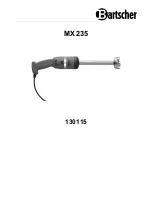
Float Sensor Test
CAUTION:
Use caution to prevent dangerous conditions when you do work
in a hazardous area.
Make sure that the area has sufficient airflow when you do a test or remove
contamination from the sensor. Make sure there are no open flames or hot
surfaces near the work area.
Sensor installed in a normally dry well
l
Put the float in the HIGH position. This will cause an alarm condition in the controller.
l
Put the float back in the LOW position. Make sure that the controller is not in an alarm condition.
Sensor installed in a normally wet well
l
Put the float in the LOW position. This will cause an alarm condition in the controller.
l
Put the float back in the HIGH position. Make sure that the controller is not in an alarm condition.
If the controller does not sense the alarm conditions simulated by these tests, look to see if the thresholds and
alarms are correctly programmed in the system. Look to see if the float is in the correct position (refer to the
applicable instruction above). A sensor or wiring fault will cause a system alarm. Do a continuity test in the
wiring and junction boxes. Make sure there is continuity with no short circuits.
Hydrocarbon Sensor - Functional Test and Remove Contamination
IMPORTANT:
It is recommended to only do the procedures below when it becomes
necessary and only as a last alternative. These procedures can cause a decrease in the
original electrical resistance of the polymer. If possible, speak with a certified OPW-FMS
technician before you do these procedures.
NOTICE:
Do not use fuel (gasoline, diesel etc.) to test or clean the sensor!
Once
the carbon/polymer material has touched liquid hydrocarbon, it is possible that the sensor
will not return to its initial electrical resistance. This can have an unwanted effect on its
operation. Replace the sensor if necessary. If you do not obey this instruction it can void
your warranty.
Functional Test - Hydrocarbon Liquid Sensor of the Device
l
Put the polymer fully into
Mineral Spirits
and wait approximately 10 minutes.
l
Remove the sensor and let it hang to air dry for another 10 minutes.
Doc. No.: M2010-EU Rev.: 13
Page 66 of 149
Содержание M2010-EU
Страница 6: ...Warranty 147 Doc No M2010 EU Rev 13 Page 6 of 149...
Страница 20: ...Main Board Connections Jumpers and LEDs Doc No M2010 EU Rev 13 Page 20 of 149...
Страница 21: ...Conduit Installation Doc No M2010 EU Rev 13 Page 21 of 149...
Страница 22: ...Field Wiring Diagram Doc No M2010 EU Rev 13 Page 22 of 149...
Страница 32: ...Doc No M2010 EU Rev 13 Page 32 of 149...
Страница 38: ...924B Probe Installation DMP Probe Installation Doc No M2010 EU Rev 13 Page 38 of 149...
Страница 41: ...Doc No M2010 EU Rev 13 Page 41 of 149...
Страница 86: ...Typical Installation Drawings 30 0230 S Doc No M2010 EU Rev 13 Page 86 of 149...
Страница 110: ...Appendix C Declaration of Conformity Doc No M2010 EU Rev 13 Page 110 of 149...
Страница 111: ...Doc No M2010 EU Rev 13 Page 111 of 149...
Страница 112: ...Doc No M2010 EU Rev 13 Page 112 of 149...
Страница 113: ...Doc No M2010 EU Rev 13 Page 113 of 149...
Страница 142: ...Doc No M2010 EU Rev 13 Page 142 of 149...
Страница 146: ...Doc No M2010 EU Rev 13 Page 146 of 149...
Страница 149: ......
















































